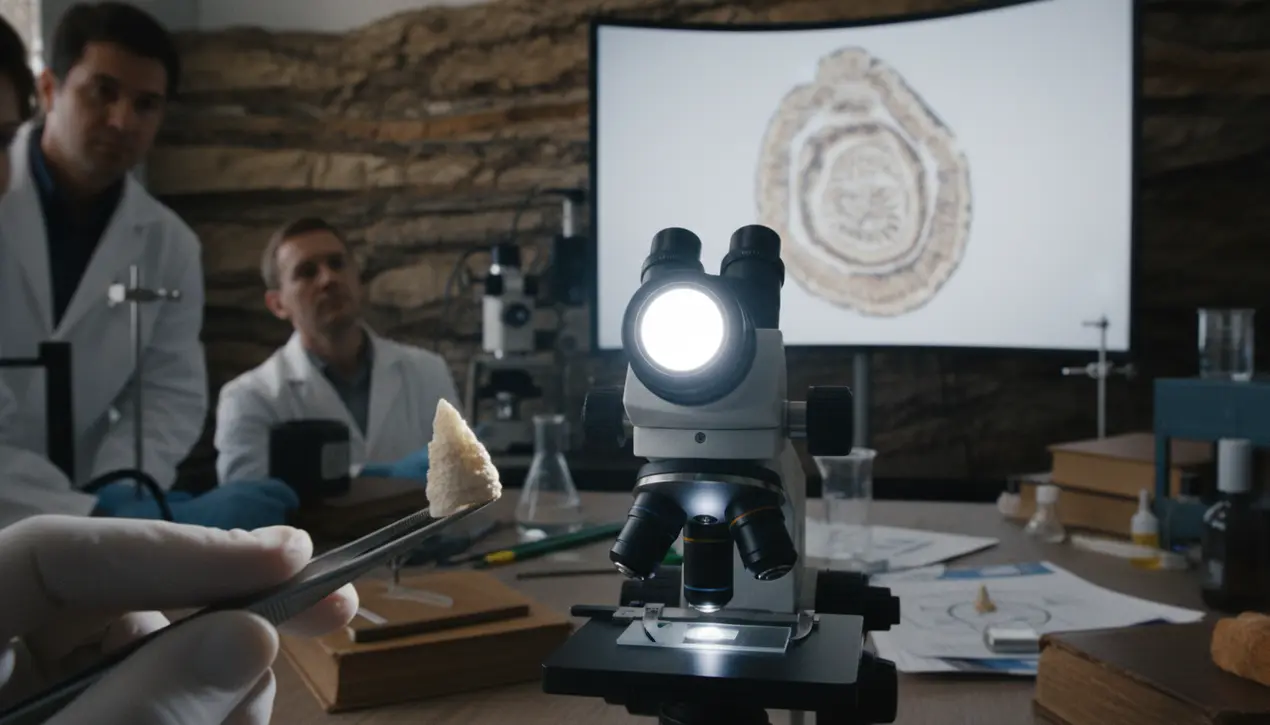
SciencebiologyEvolution and Ecology
A 540-million-year-old fossil is rewriting evolution
KE
Kevin White
3 hours ago7 min read
In the grand, unfolding narrative of life's history, few discoveries resonate with the tectonic significance of a 540-million-year-old fossil that is fundamentally recalibrating our understanding of evolutionary biology's most pivotal moment. The Cambrian Period, long celebrated as biology's 'big bang' for its sudden proliferation of complex, skeletal life, now reveals a more nuanced and technologically sophisticated origin story through the lens of a peculiar organism named Salterella.For decades, this tiny, conical fossil was a paleontological enigma, a biological paradox that stubbornly defied conventional classification. Its structure, a meticulous fusion of two distinct mineral-building methodologies—the controlled secretion of micro-laminae typical of complex animals and the passive, grain-by-grain agglutination seen in simpler organisms like foraminifera—posed a profound question.Was it a simple foraminiferan that had stumbled upon an advanced trick, or a complex animal that had retained a primitive construction technique? This morphological ambiguity has finally been resolved by a consortium of international researchers employing cutting-edge micro-analytical techniques, including high-resolution electron microscopy and geochemical analysis, which have conclusively linked Salterella to the cnidarian family tree, the group that includes modern corals and jellyfish. This is not merely a taxonomic re-shuffling; it is a paradigm shift in our comprehension of biomineralization's genesis.The prevailing hypothesis suggested a relatively linear, stepwise evolution of skeleton-building, but Salterella shatters that simplicity. It demonstrates that the early Cambrian was a frenetic workshop of biological experimentation, a period where multiple genetic toolkits for constructing hard parts were being tested, combined, and discarded in a Darwinian crucible of innovation.Imagine it as nature's first and most critical prototyping phase, where the blueprints for everything from the human spine to the exoskeleton of a beetle were being drafted simultaneously. The organism essentially operated as a 'hybrid builder,' using an agglutinated sand-grain sheath for rapid, structural scaffolding while simultaneously secreting intricate, organic-rich internal layers for added strength and metabolic control—a dual-strategy approach previously undocumented from this era.This discovery profoundly deepens our understanding of how animals first learned to build their own skeletons, moving beyond a simple 'on/off' switch for biomineralization to a complex interplay of environmental triggers, genetic plasticity, and ecological pressures. The high concentrations of calcium and silica in the Cambrian oceans, a geochemical legacy of planetary changes, provided the raw materials, but it was the evolutionary arms race—the relentless pressure from the first predators—that provided the imperative to use them.Salterella stands as a testament to this transitional moment, a 'missing link' not between species, but between fundamentally different engineering philosophies for life. For scientists in the burgeoning field of synthetic biology and biomimetics, Salterella's dual-method construction offers a revolutionary model.It suggests pathways for developing new composite materials that are both robust and resource-efficient, drawing inspiration from one of life's earliest and most successful engineering experiments. As we peer deeper into the genetic and molecular mechanisms that Salterella's descendants may still harbor, we are not just rewriting a chapter in a textbook; we are unlocking the foundational principles of structural biology itself, with implications that stretch from understanding skeletal diseases to pioneering next-generation material science. The story of this 540-million-year-old fossil is, ultimately, the story of how life first learned to build its future from the bones of the Earth, and its lessons are only just beginning to be decoded.
#featured
#Cambrian Period
#Salterella fossil
#cnidarian family
#skeletal evolution
#paleontology
#biology breakthrough
Stay Informed. Act Smarter.
Get weekly highlights, major headlines, and expert insights — then put your knowledge to work in our live prediction markets.
Related News
Comments
Loading comments...
© 2025 Outpoll Service LTD. All rights reserved.
